Celebrating A Century of the Biological and Agricultural Engineering Department
About this Exhibit
The Biological and Agricultural Engineering Department celebrated its centennial with a gala dinner held at Shields Library on October 3, 2015. As part of the celebration, Special Collections created an exhibit with highlights from the department’s first century. The exhibit, created by Sara Gunasekara, is now presented here online.
More information about the history of the department can be found on the Biological and Agricultural Engineering website.
Early Years
In 1915 J.B. Davidson, Head of the Agricultural Engineering Department at Iowa State College, was asked by Dean Thomas F. Hunt to come to Davis to create a professional Division of Agricultural Engineering. L.J. Fletcher, who replaced Davidson in 1919, persuaded the College of Engineering Mechanics at UC Berkeley to open an option in Agricultural Engineering. Starting in 1924, instruction in this program took place at Berkeley for the first, second, and fourth years, while a summer course and third year instruction were given at Davis.
Agricultural Engineering class in Irrigation Machinery lab, undated.
Division of Agricultural Engineering forge float, Picnic Day, 1917.
1920s
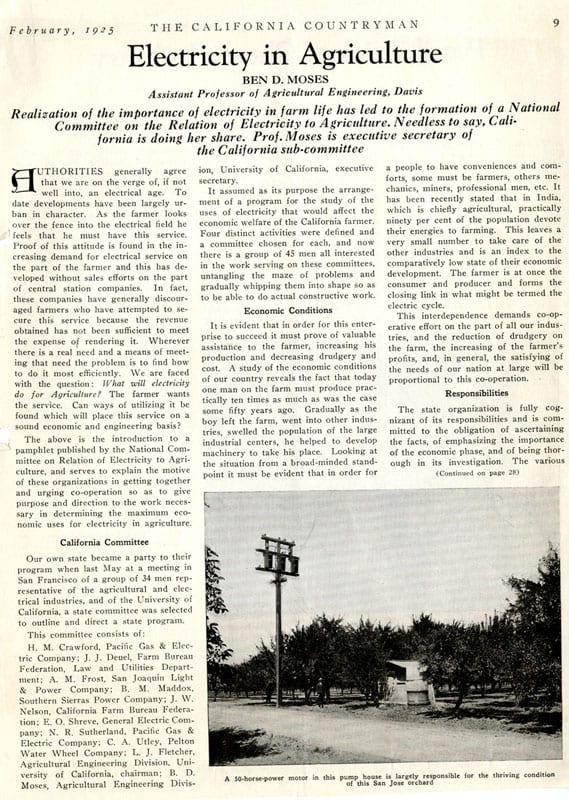
The department administered the California Committee on the Relation of Electricity to Agriculture (CREA) upon its formation in 1924.
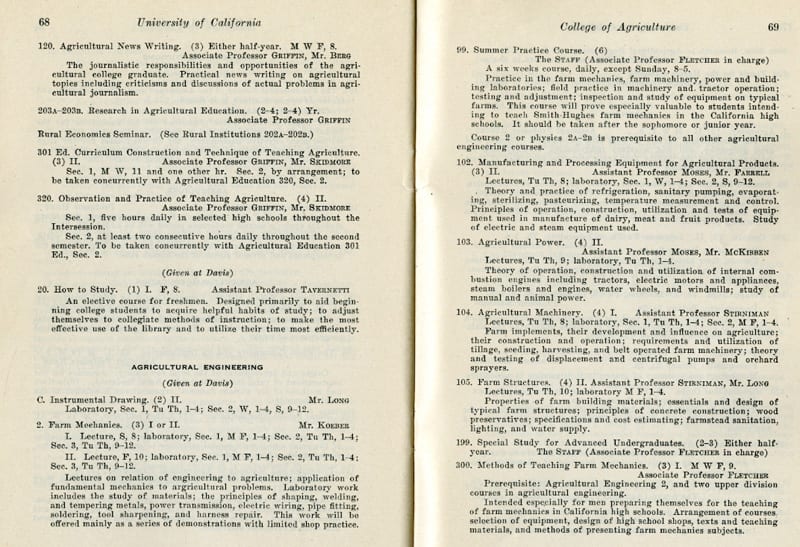
Agricultural Engineering class listing from the Prospectus of the College of Agriculture, 1925-1926.
In 1928 the division moved into a new building designed by William C. Hays. It was named Walker Hall in 1959 in honor of Professor Harry B. Walker who served as Chair from 1928-1947.

Agricultural Engineering Building (Walker Hall) after roof and exterior finish had been completed, April 18, 1927.
Program for the dedication of the Agricultural Engineering Building:

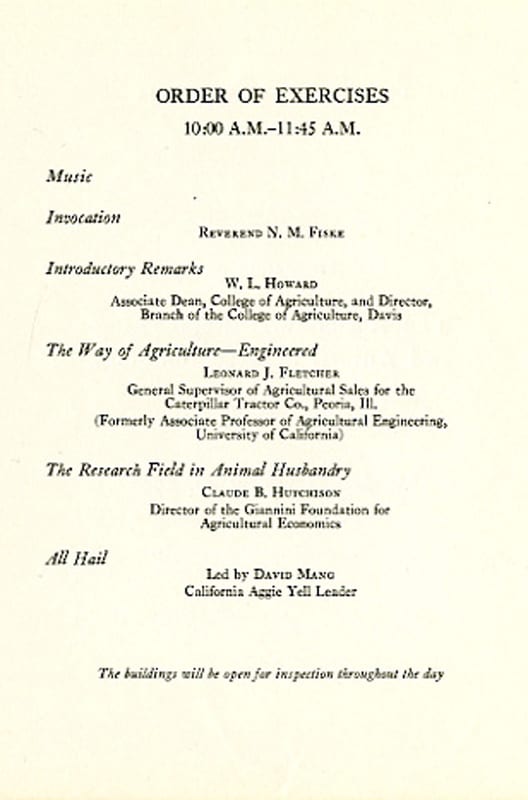
1950s-1960s
Professor Roy Bainer served as Chair from 1947-1961 and as Founding Dean of the College of Engineering. Listen to Roy Bainer’s oral history, Engineering of Abundance, on the Internet Archive.
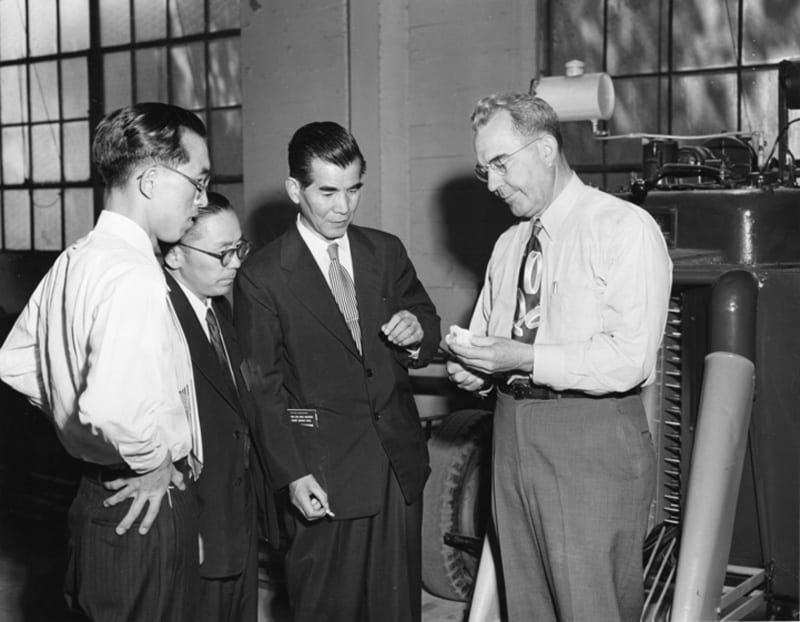
Pictured: Three Japanese farm credit experts listen intently as Roy Bainer, Chairman of the Department of Agricultural Engineering, explains the operation of a mechanical cotton picker.
Hideo Tokoro of the Ministry of Agriculture and Forestry, Susumu Oyamada of the Central Cooperative Bank and Mototake Yukawa, President of the Central Cooperative Bank, were attending the International Conference on Agricultural and Cooperative Credit in Berkeley, California, August 1952.

George Gianinni and Ernest Head with the UC grape harvester, 1954.
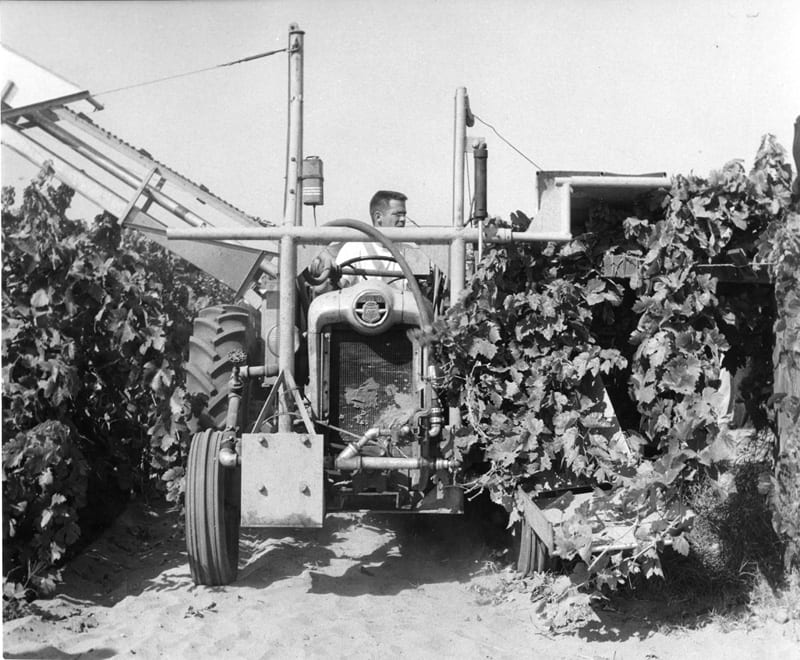
UC grape harvester, 1956.

Coby Lorenzen (left) and H. Schultz on a television tower in Walnut Grove, California, circa 1950s.
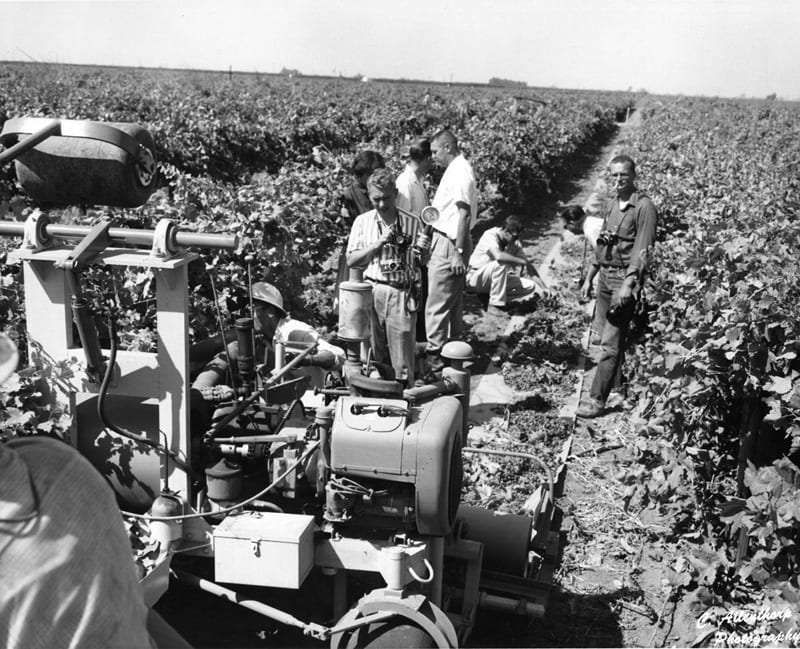
Lloyd Lamouria and others in a field, 1962.
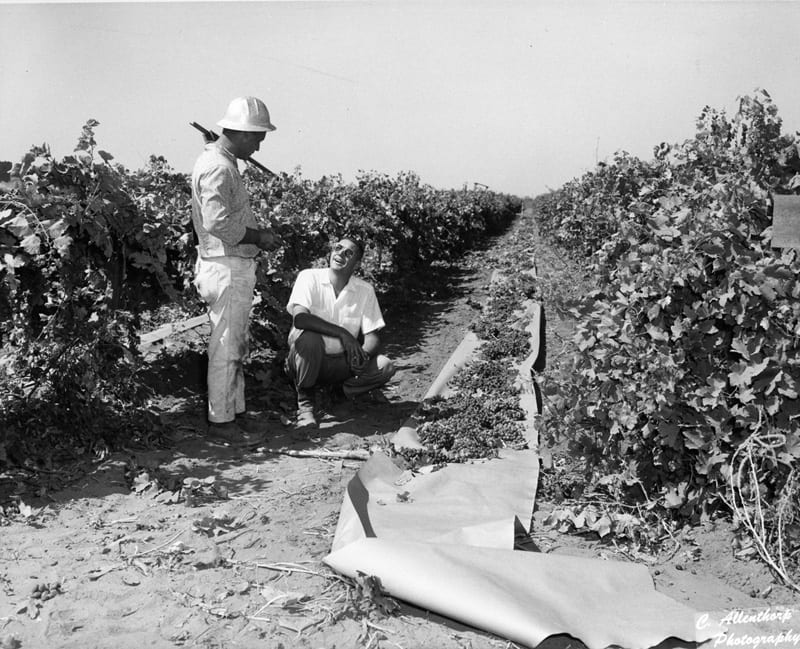
Lloyd Lamouria and Bill Bilbo looking at grapes, 1962.

Bill Bilbo, 1962.
Examples of conferences sponsored by the department in the 1950s-1960s
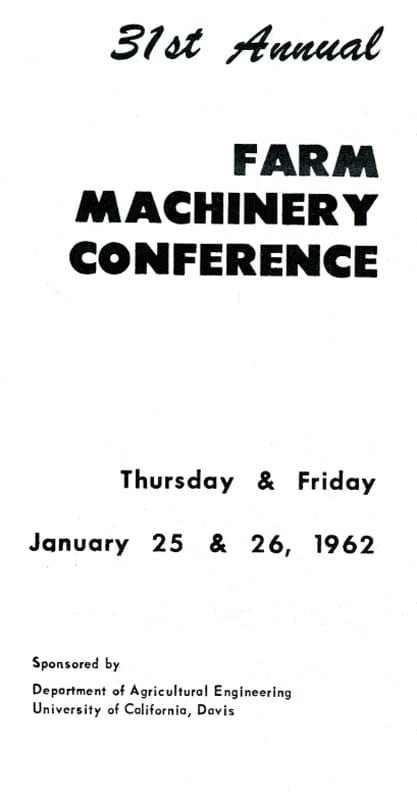


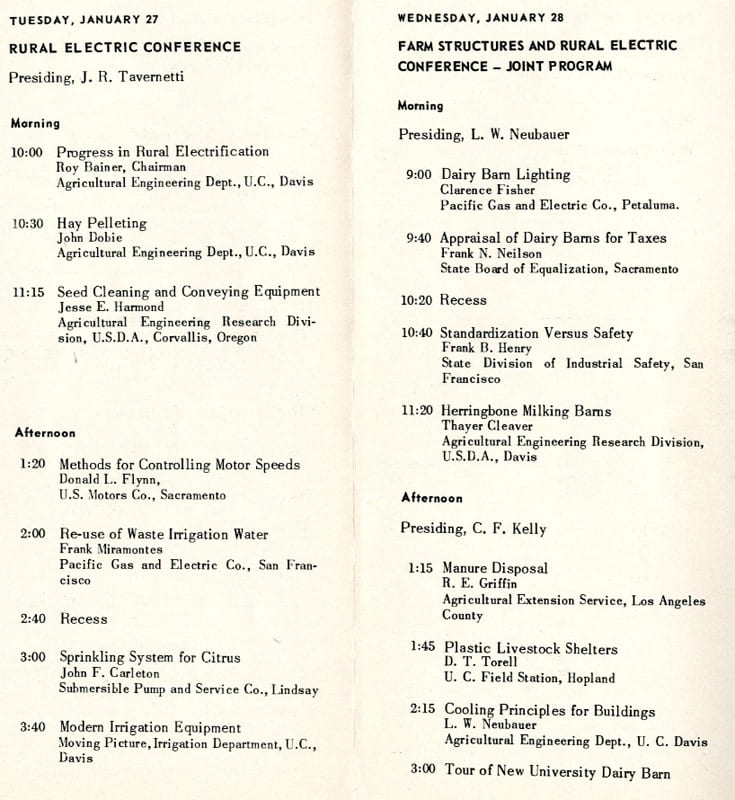
Coursework
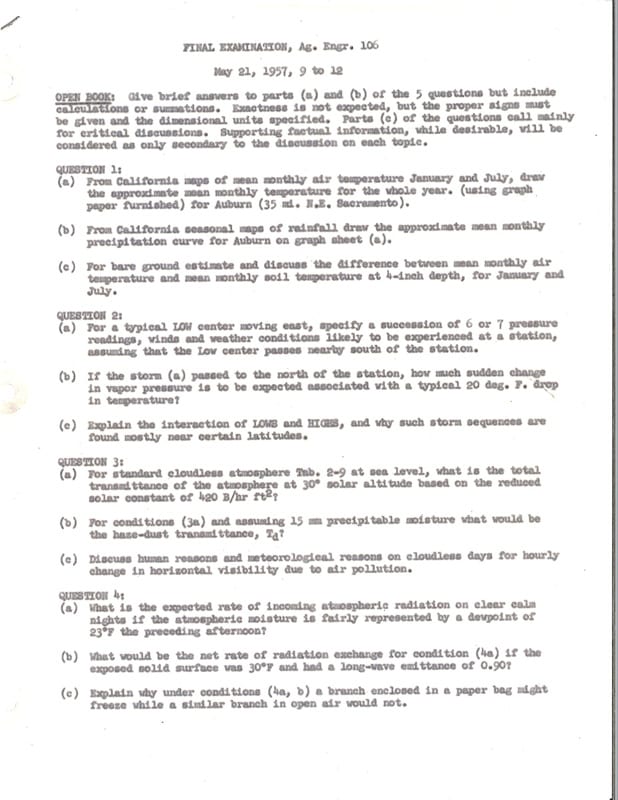
First page of the final examination for Agricultural Engineering 106 taught by Professor Frederick Brooks, 1957.

The first Ph.D degree in the department was awarded to David Van Rest in 1960.
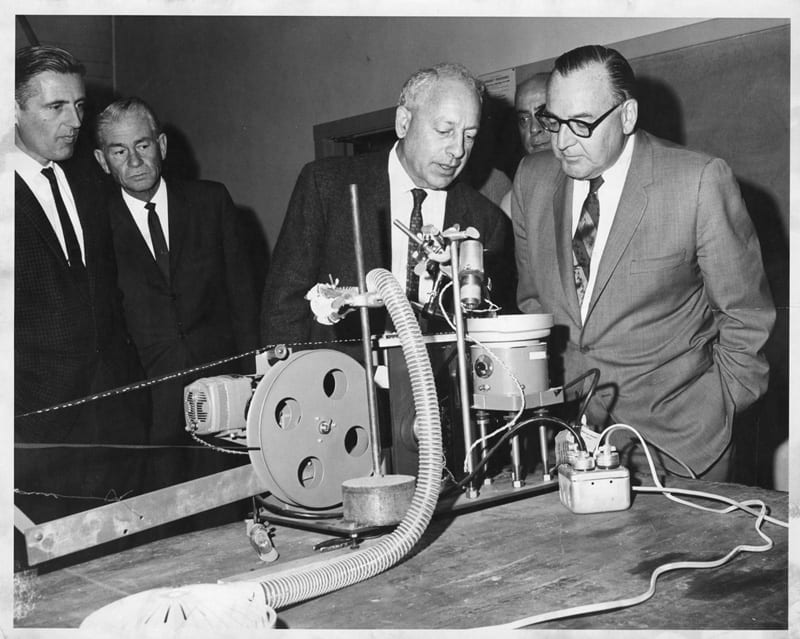
Governor Pat Brown (right) visits the Agricultural Engineering Department. Coby Lorenzen on left, 1965
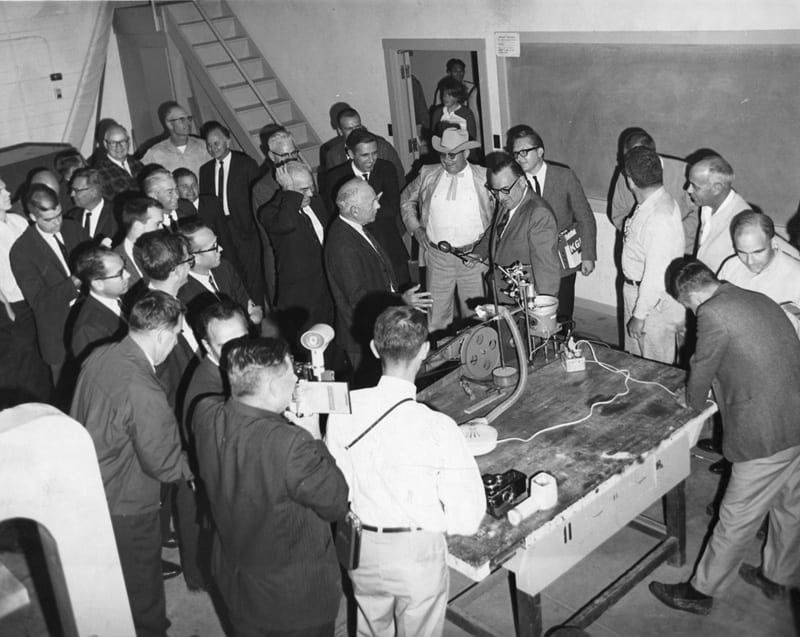
Governor Pat Brown visits the Agricultural Engineering Department, 1965.
Engineering Building I
Engineering Building I, a reinforced and precast concrete structure designed by Dreyfuss & Blackford, was dedicated in 1968. In 1969, it was named in honor of Roy Bainer.
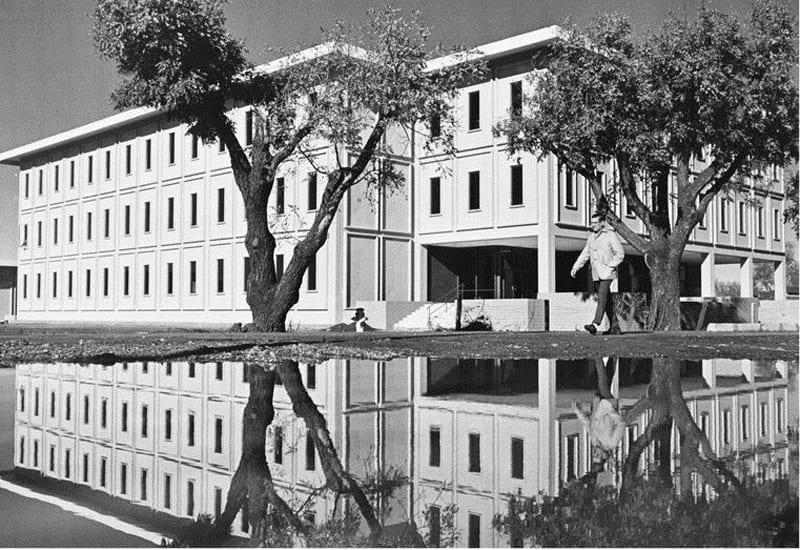
Bainer Hall, circa late 1960s.
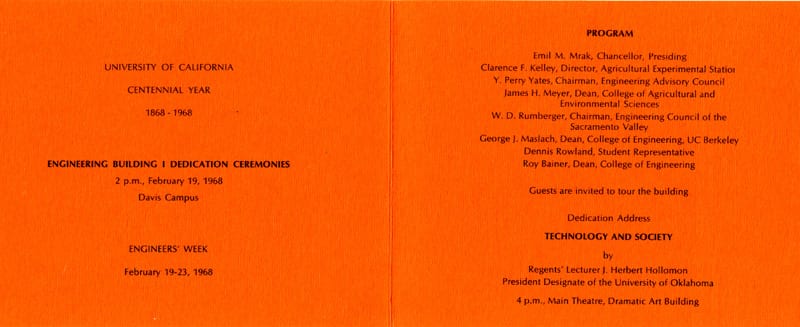
Program for dedication of Engineering Building I, 1968.
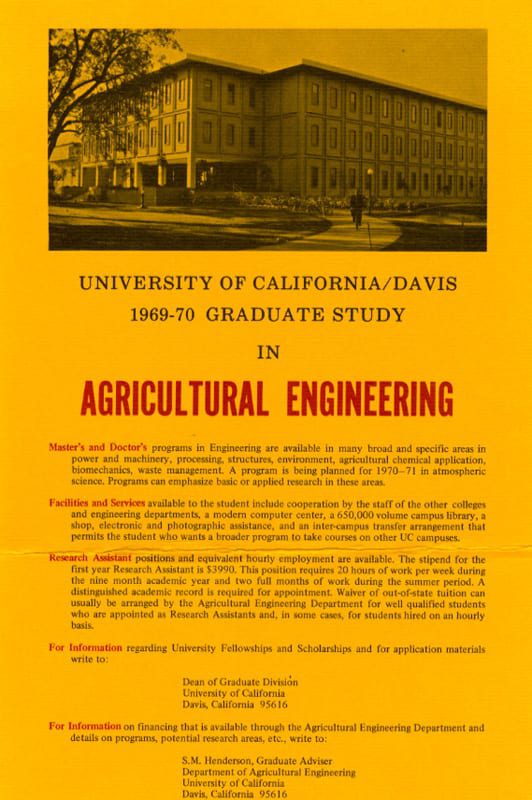
Flyer for Graduate Study in Agricultural Engineering, 1969.
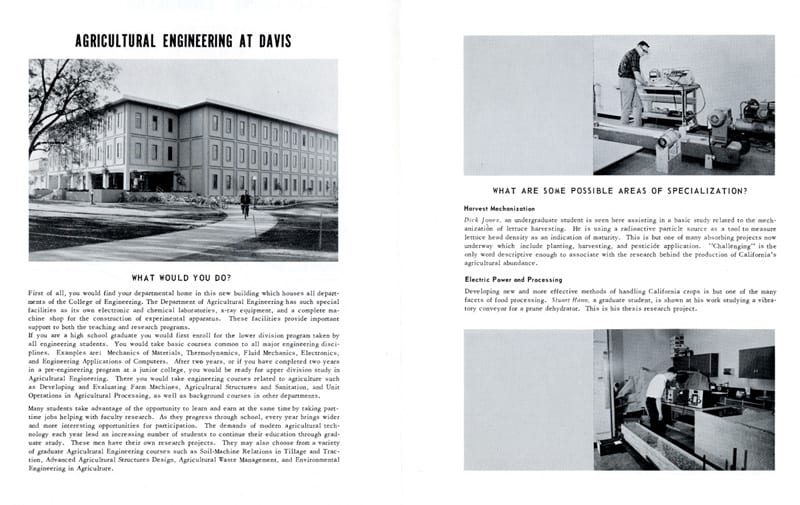
Agricultural Engineering at Davis brochure, 1968.
Tomato Harvester
In 1949, UC Davis agricultural engineer Coby Lorenzen and UC Davis vegetable crops researcher Jack Hanna began work on developing a harvester and a tomato variety that could withstand the rigors of mechanical picking. During the 1950s, the UC Davis team refined the experimental harvester and in 1959 Blackwelder Manufacturing of Rio Vista, California commercialized the design. The tomato harvester is said to have saved California’s processed tomato industry in the 1960s.
View a digitized recording of the UC Blackwelder tomato harvester on the Internet Archive.
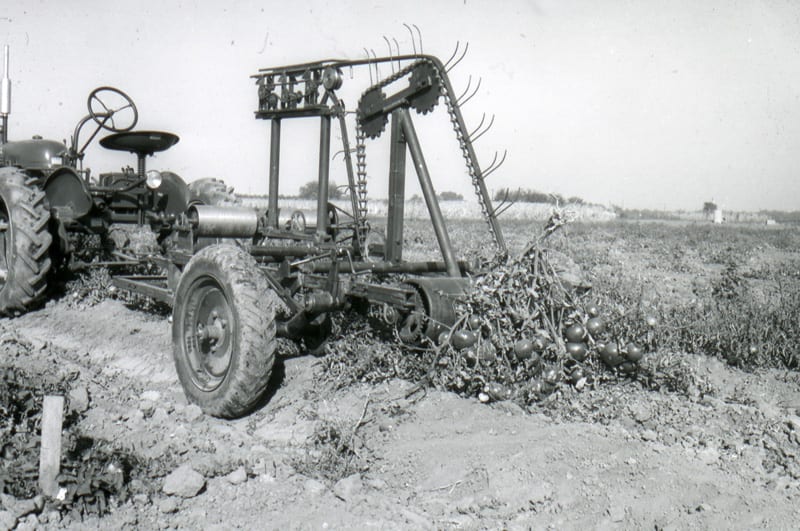
Original field trial of separation unit used in tomato harvester, 1952.
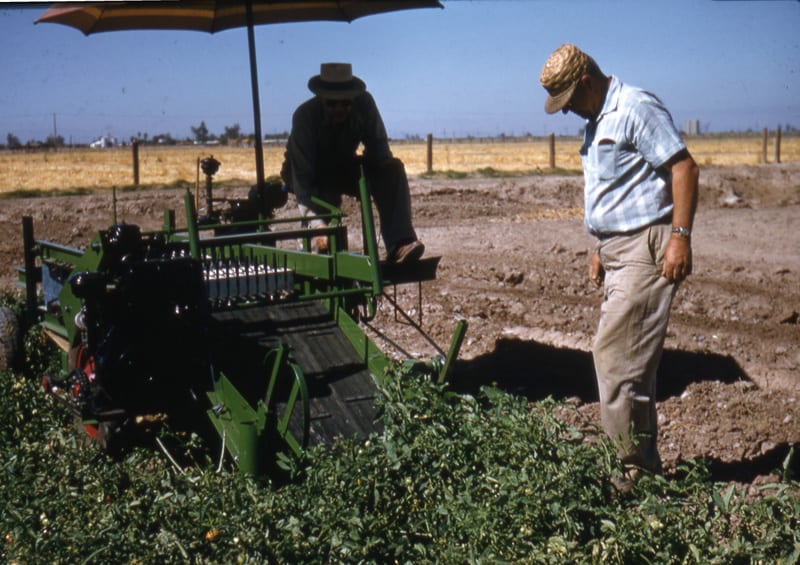
Gordie Hanna and Coby Lorenzen with the tomato harvester, 1958.
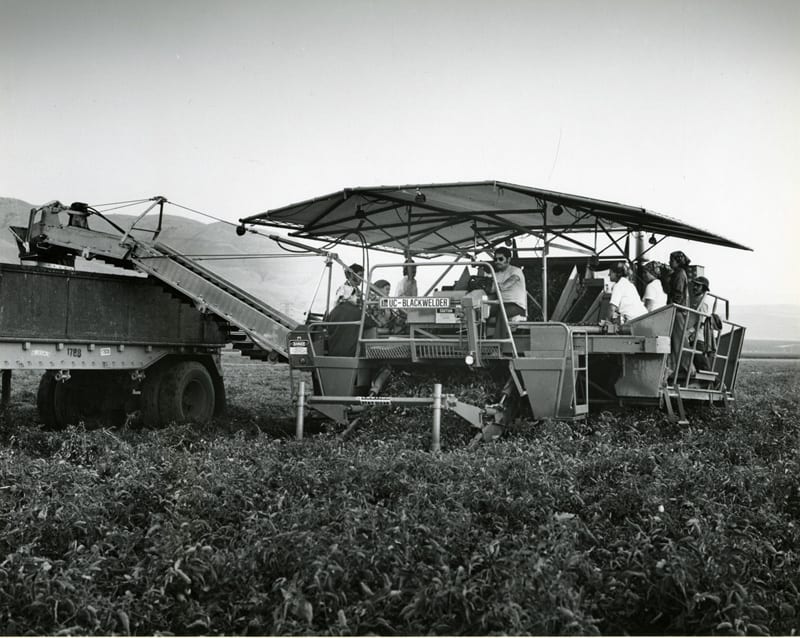
UC Blackwelder tomato harvester, circa 1960s.
1970s-1980s

Agricultural Engineering Department Faculty Members, January 1971.
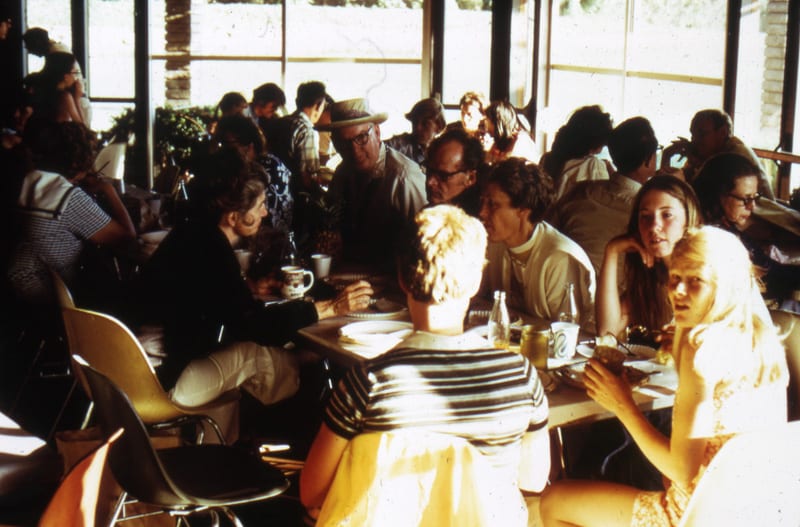
Department luau, June 1973.
Information for Prospective Graduate Students, March 1978:
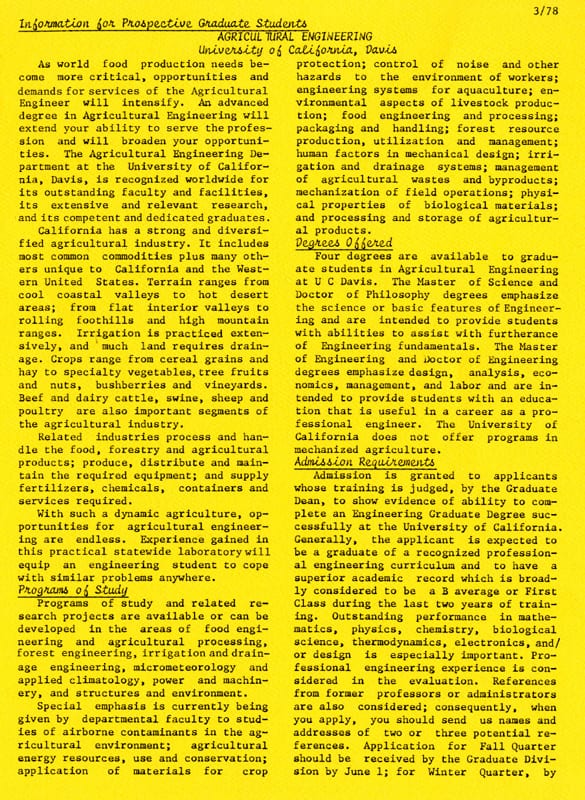
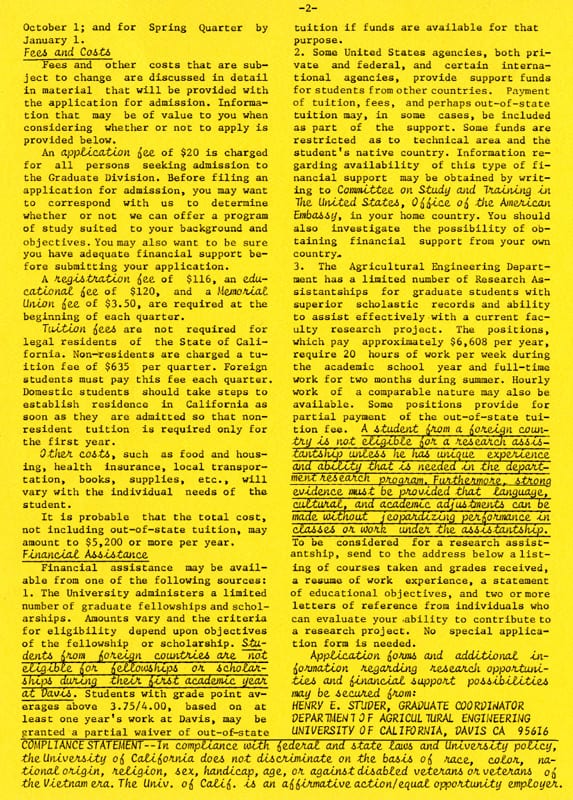
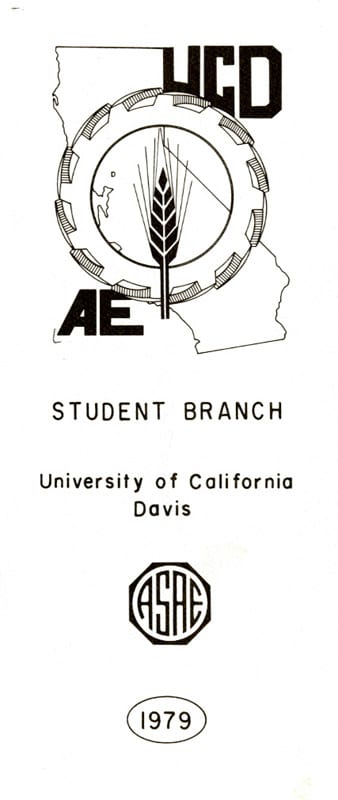
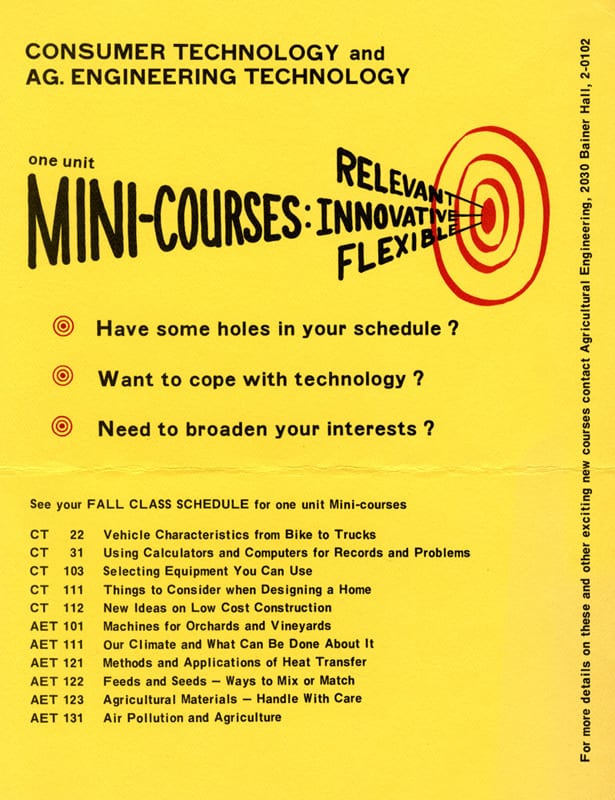
Flyer for mini-courses, circa 1970s.
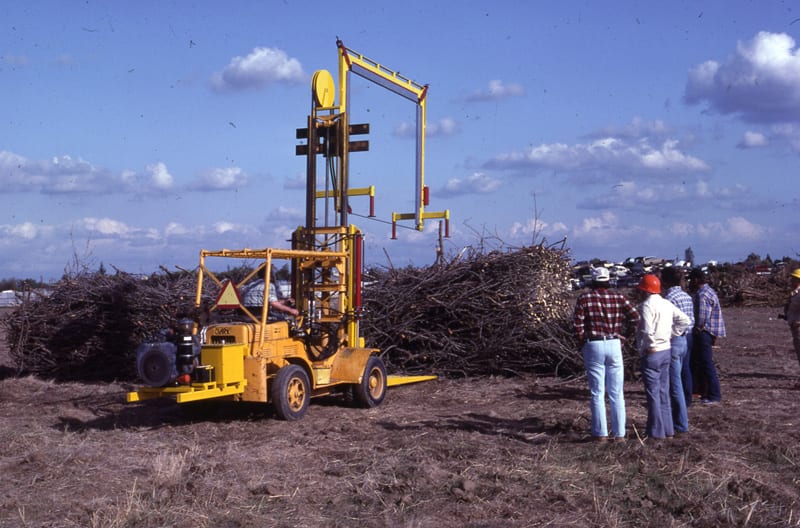
Research related to Mark Zohn’s master’s thesis, The Design and Evaluation of an Almond Brush Module Cutter, circa 1983.
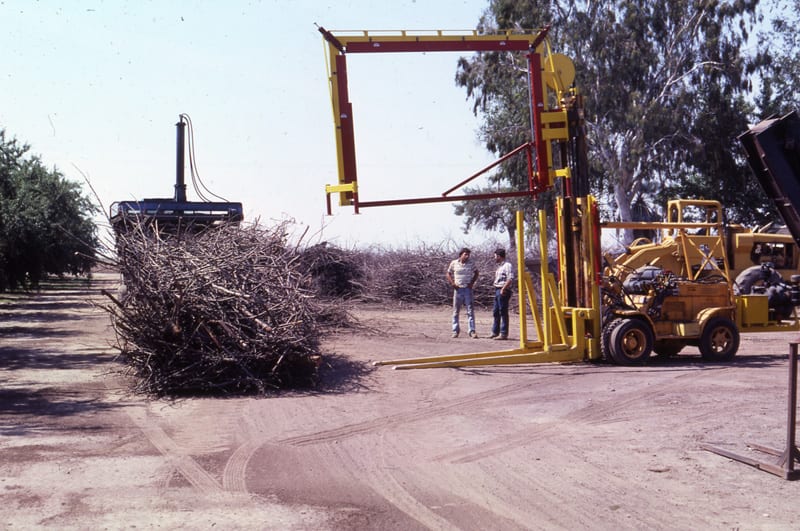
Research related to Mark Zohn’s master’s thesis, The Design and Evaluation of an Almond Brush Module Cutter, circa 1983.
1990s-2000s

July 9, 1992 memo from Lawrence Coleman, Acting Vice Provost of Academic Programs and Dean of Undergraduate Studies, to the College of Engineering informing them of the department’s name change to Biological and Agricultural Engineering.
During the 1990s-2000s, the department published a semi-annual newsletter, Bio Ag E:


More information about the history of the department can be found on the Biological and Agricultural Engineering website.
Images (unless otherwise credited) are the property of the Regents of the University of California; no part may be reproduced or used without permission of the Department of Special Collections.